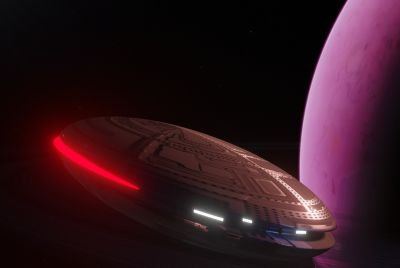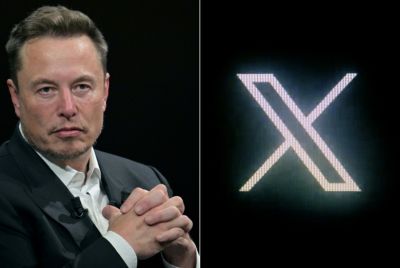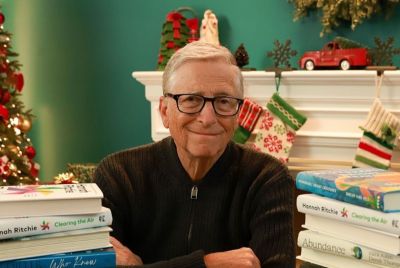What Is Elon Musk's Next Product? Musk's Robotaxi 'Ready' After 6 Years of Delays
Despite Musk's grand projections, critics doubt Tesla's ability to deliver on this ambitious venture

Elon Musk, a name synonymous with ambitious innovation, has consistently pushed the boundaries of technology. His ventures, from revolutionising electric vehicles to exploring space, frequently capture global attention.
Now, after years of anticipation and a series of delays, a new project is poised to take centre stage: the long-awaited robotaxi. This week, Elon Musk shared on social media that Tesla's eagerly awaited robotaxi service is scheduled to begin operating in Austin, Texas, on 22 June.
Austin >> LA for robotaxi launch lol
— Elon Musk (@elonmusk) June 10, 2025
🚨 BREAKING: Another Tesla Robotaxi spotted on public roads in Austin, TX with no one in the driver’s seat 👀🔥
— Muskonomy (@muskonomy) June 11, 2025
This is not a test anymore… it’s happening $TSLA pic.twitter.com/fd0GhNkOaI
The Robotaxi Promise: Fact or Fiction?
The Tesla CEO is placing the company's future on autonomous vehicles (AVs) and a robotaxi service, which is intended to provide a crucial financial boost as the company's sales and profits are declining.
While Musk is promoting the idea of robotaxis—self-driving cars that can transport paying passengers without a driver—worries exist regarding their safety and potential as a successful business venture.
Despite traditional automakers like General Motors already abandoning similar service plans after investing billions – citing the 'considerable' resources required and an 'increasingly competitive' robotaxi market – some experts contend that Tesla's true rivals are human Uber and Lyft drivers.
Regardless, Musk continues to make grand statements about technology's potential to transform Tesla and the wider world.
'I don't see anyone being able to compete with Tesla at present,' Musk said during April's earnings call about why he believes Tesla's robotaxi service will succeed. 'But at least as far as I'm aware, Tesla will have, I don't know, 99% market share or something ridiculous.'
Robotaxis Arrive
Musk noted in his social media post that the 22 June launch date remained provisional. However, whenever it does begin, Tesla will be trailing significantly behind more established services. 'There are real robotaxis on the road today. None of them is a Tesla,' said Bryant Walker Smith, an affiliated scholar at the Centre for Internet and Society at Stanford Law School, an expert in autonomous vehicles.
'The challenge is less technological and more economic,' Smith added. 'If a company that needs to pay engineers and mechanic and remote assistance has to compete with Uber drivers who might be making less than minimum wage to maintain their own older vehicle, that's kind of hard to do.'
Among the robotaxis already in operation is Google's Waymo, which currently completes over 250,000 paid journeys each week across four US cities: San Francisco, Los Angeles, Phoenix, and Austin. Additionally, companies in China have also established robotaxi services.
Robotaxi Trust Issues Mirror Early Tech Fears
Like early automated lifts requiring human operators to allay public concerns, robotaxis is encountering similar public reluctance. However, attitudes can change rapidly, as Smith observes: 'I often see... people are nervous about it getting in a robotaxi. And then they get in, and within literally minutes, (they're) on their phones, and they're checked out, it's normal.'
Tesla's 'Full Self-Driving' system relies solely on cameras, in contrast to competitors like Waymo, which integrates lidar technology. Elon Musk has famously dismissed lidar as 'friggin stupid,' asserting that humans navigate without lasers.
People don’t shoot lasers out of their eyes to drive.
— Elon Musk (@elonmusk) March 27, 2025
Just try Tesla self-driving today, which just uses cameras and AI, and you will understand. https://t.co/uArUTLAhlF
While omitting lidar reduces production costs, experts argue it compromises safety. Consequently, the US road safety agency is investigating several Tesla crashes, including a fatal incident where a pedestrian was hit in poor visibility.
According to Smith, these crashes show the flaw in relying only on cameras. 'If you could enable drivers to have lasers shooting out their eye to avoid sun glare and things, it would be a good thing,' he added.
Tesla's Robotaxi Bet
Tesla relies on its long-promised robotaxi service to boost flagging sales and a declining stock, but many remain doubtful. While Musk asserts it will create the 'largest asset value increase in human history,' similar claims since 2019 haven't materialised.
Critics view the upcoming launch as more spectacle than reality, and analysts caution that Tesla hasn't demonstrated its ability to deliver. Despite ambitious visions of transforming transport and turning Teslas into income-generating assets, some, like Smith, are unconvinced.
'When we're talking about the future, it's important to recognise that that future is not one that Tesla has demonstrated itself able to deliver,' Smith said.
© Copyright IBTimes 2025. All rights reserved.






















